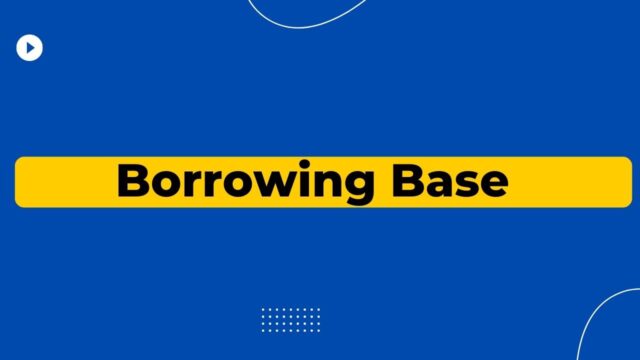
When determining borrowing base, it is crucial to understand the valuation of your business’ inventory and equipment. Typically, this valuation is based on the current market value of the inventory or equipment, which is the value the inventory and equipment would command if sold today. Lenders may require an on-site inspection of your business premises to determine the exact valuation. The value of your inventory and equipment should reflect current market value, rather than their initial retail value, since depreciation must be factored in. This depreciated value is what the lenders use to certify your borrowing base.
Inventory valuations
A business may need to obtain a loan to finance inventory acquisition or replenishment. To qualify for this type of loan, an owner must determine the cost of the inventory. In addition, the lender may require certain information regarding the inventory. An appraisal is a crucial part of the loan application process. However, the valuation process is not always straightforward. Many factors should be considered when evaluating the value of inventory. The following tips can help an owner maximize the value of their inventory.
When applying for a business loan, the lender will likely appraise the business’ inventory. The valuation will determine the value of inventory that can be sold today at current prices. The lender may also require an inspection of the company’s premises. For equipment, the valuation should be current, not its retail value. Depreciation is a factor to account for, because the lender will use the depreciated value for borrowing base certification.
Accounts receivable valuations
If your business relies on accounts receivable to fund operations, you may be wondering how this asset is valued and what it means for your borrowing base. Basically, accounts receivable is the value of all your outstanding invoices, which can be divided into business-to-business, consumer, or government invoices. Depending on the type of business, lenders may be selective in which types of invoices they will accept, and some may only lend on business-to-government and business-to-consumer accounts.
An accounts receivable valuation is used by lenders to calculate the borrowing base. This figure is the market value of the assets used as collateral, and is typically in the range of seventy-five percent to ninety-five percent. Other types of collateral may be financed at a lower LTV. The lender’s borrowing base is updated frequently to reflect any changes in the market value of the assets. New invoices or old invoices can also alter the value of the asset.
Equipment valuations
Lenders will use different borrowing base certifications for different assets. They may also disclose the discount rate and advance rate, as well as the maximum LTV that you can borrow. You should always check the lending criteria before submitting an equipment valuation for loan consideration. A properly prepared equipment valuation should factor in depreciation, and it should be based on current value. Lenders may require on-site inspections for accurate valuations.
When applying for an asset-based loan, you will need to have your equipment valued by a certified appraiser. The appraisal must follow the Uniform Standards of Professional Appraisal Practice and include such criteria as intended use, ownership interest, value-relevant characteristics, and market conditions. Many asset-based lenders use Net Orderly Liquidation Value (NOLV) for loan appraisal purposes. However, you can also use Net Orderly Liquidation Value (NOLV) to calculate the value of your equipment.
Synthetic lease obligation
The synthetic lease is a new form of financing, made possible by the adoption of FASB interpretations that require special purpose entities to bring all of their assets and liabilities onto their balance sheets. This new accounting standard will result in significant changes for many U.S. public companies. In addition to the complex accounting rules, the implementation of this new accounting standard may have a negative impact on financial ratios and credit ratings. In addition, it may make it difficult for many existing SPEs to continue their operations.
Historically, synthetic leases were common during the late ’90s and early ’00s. They fell out of favor after the Great Recession, but are now making a comeback. A synthetic lease is essentially an operating lease, with the lending institution retaining formal ownership of the asset and renting it to the lessee. The asset never appears on the lessee’s balance sheet and can be written off as an expense.


































